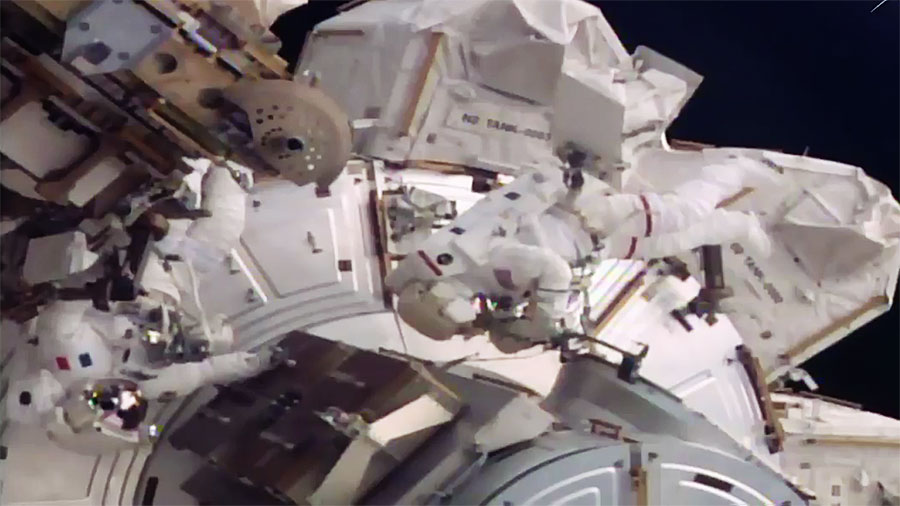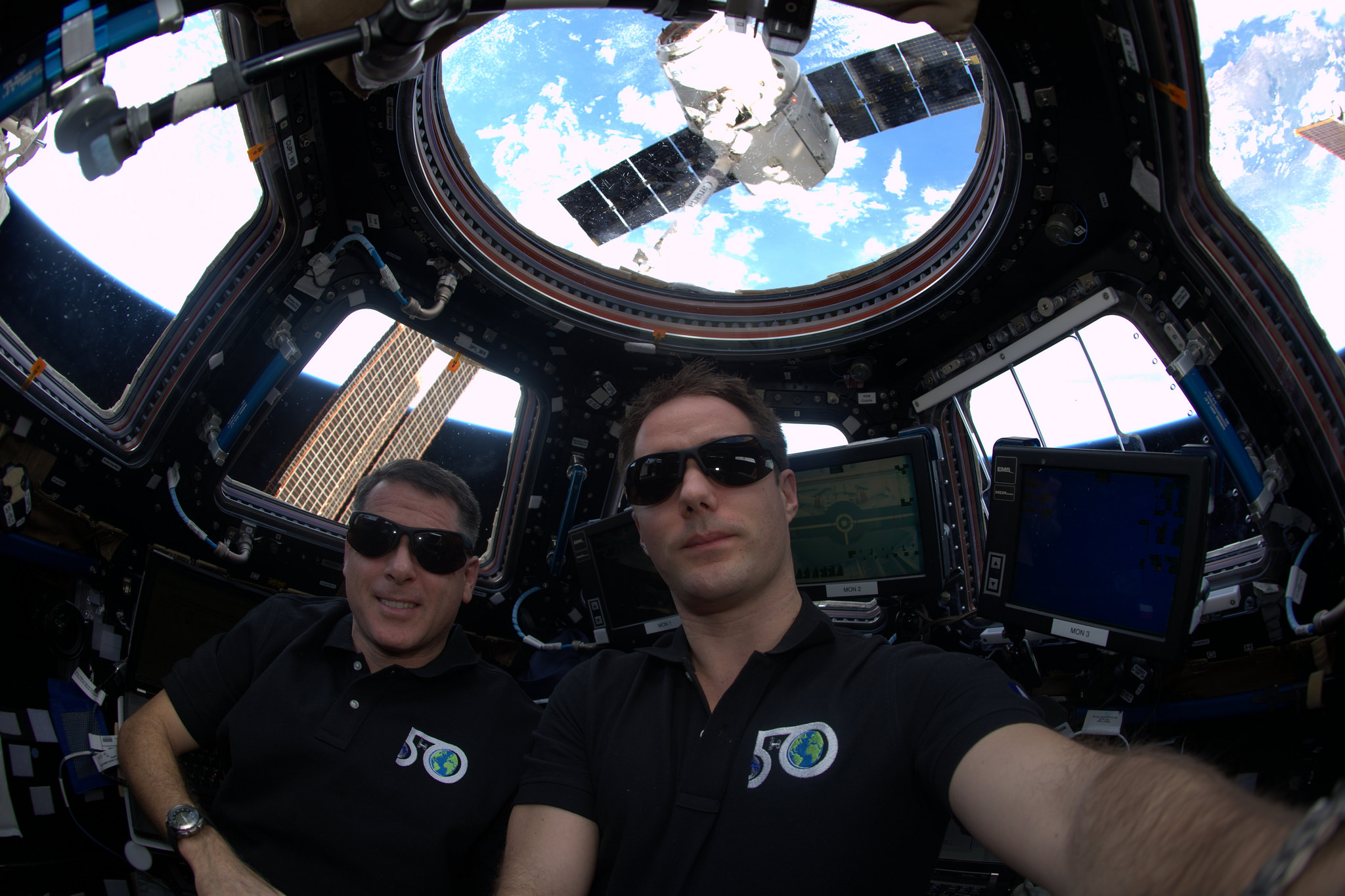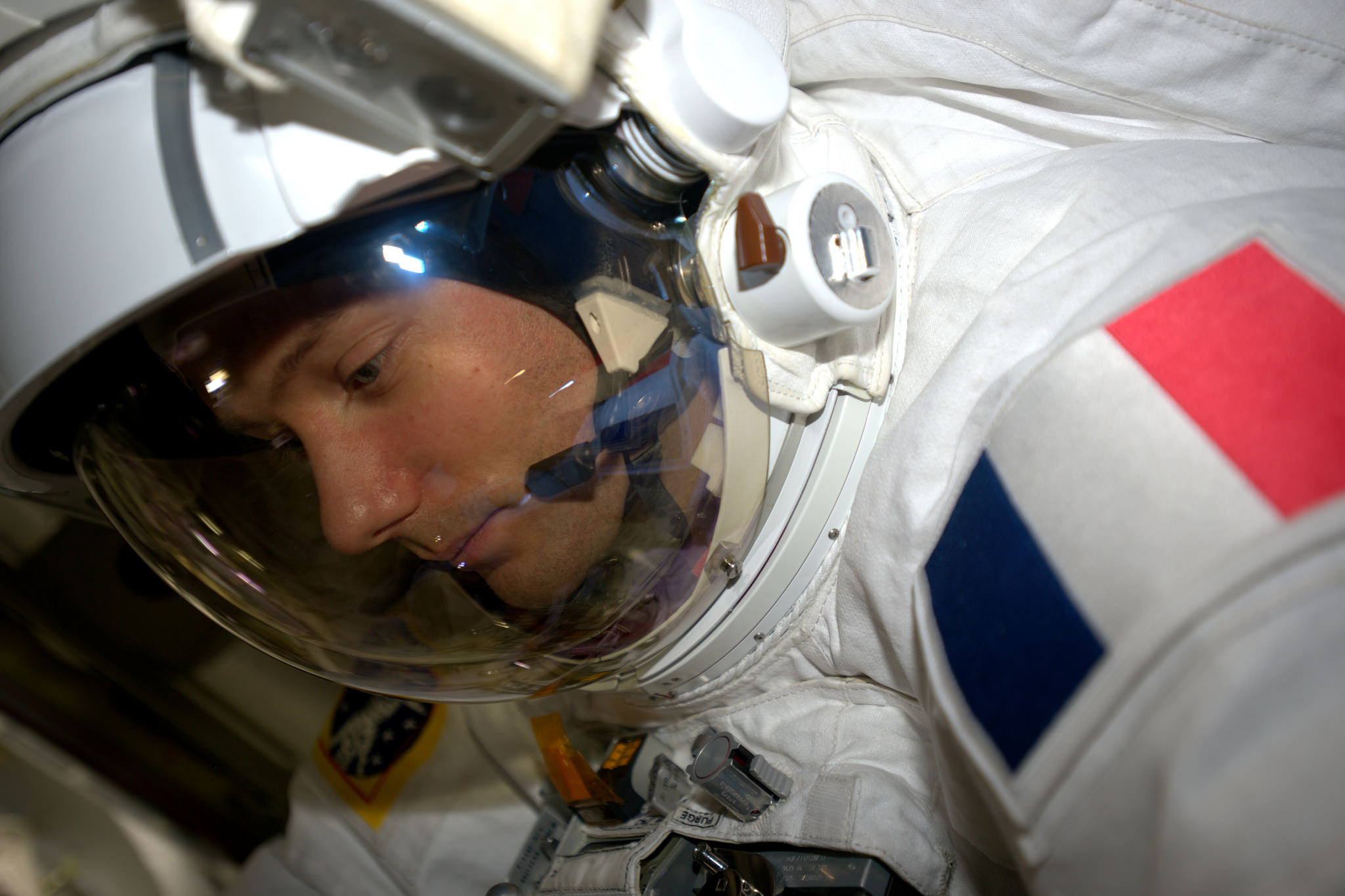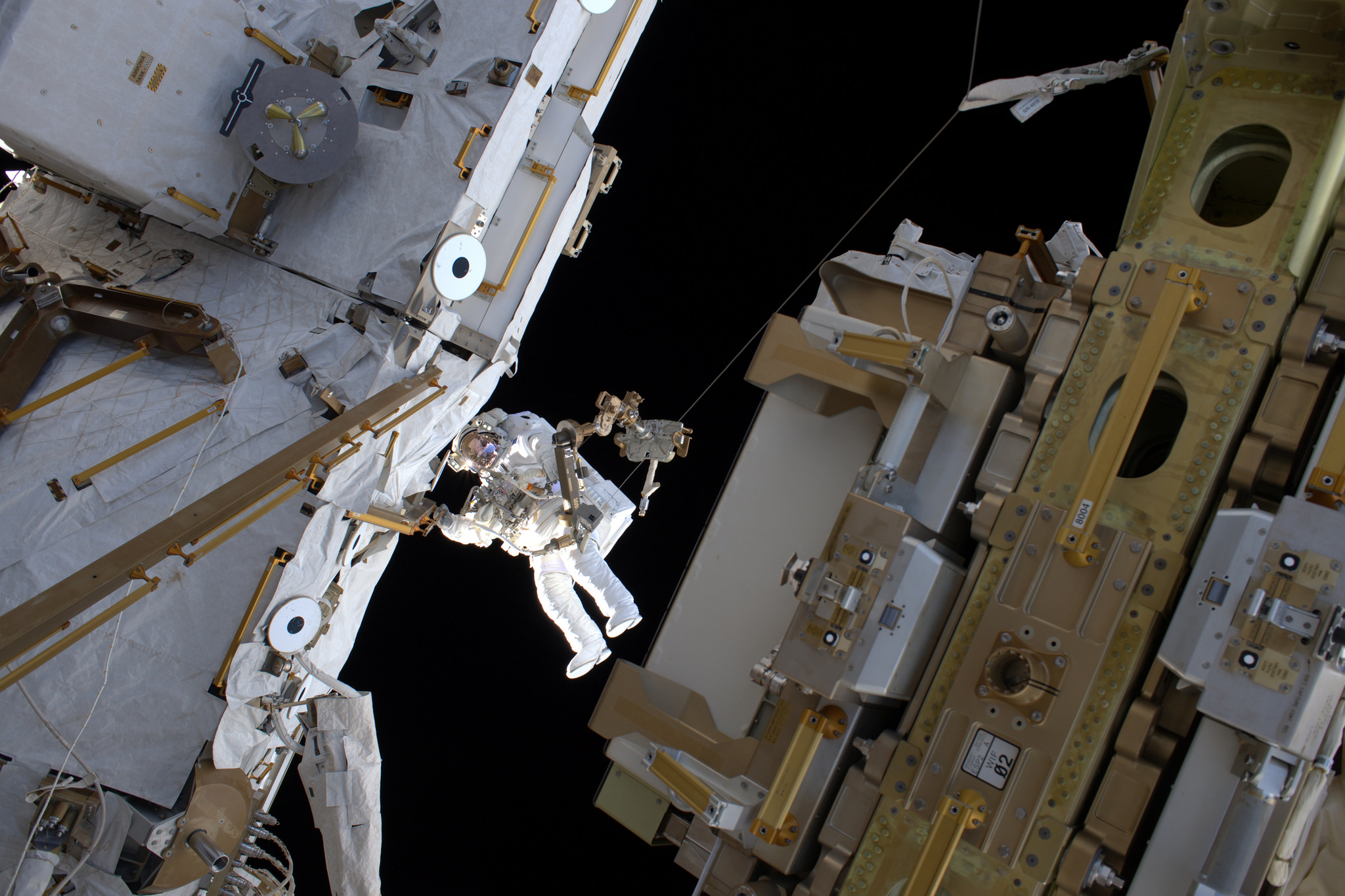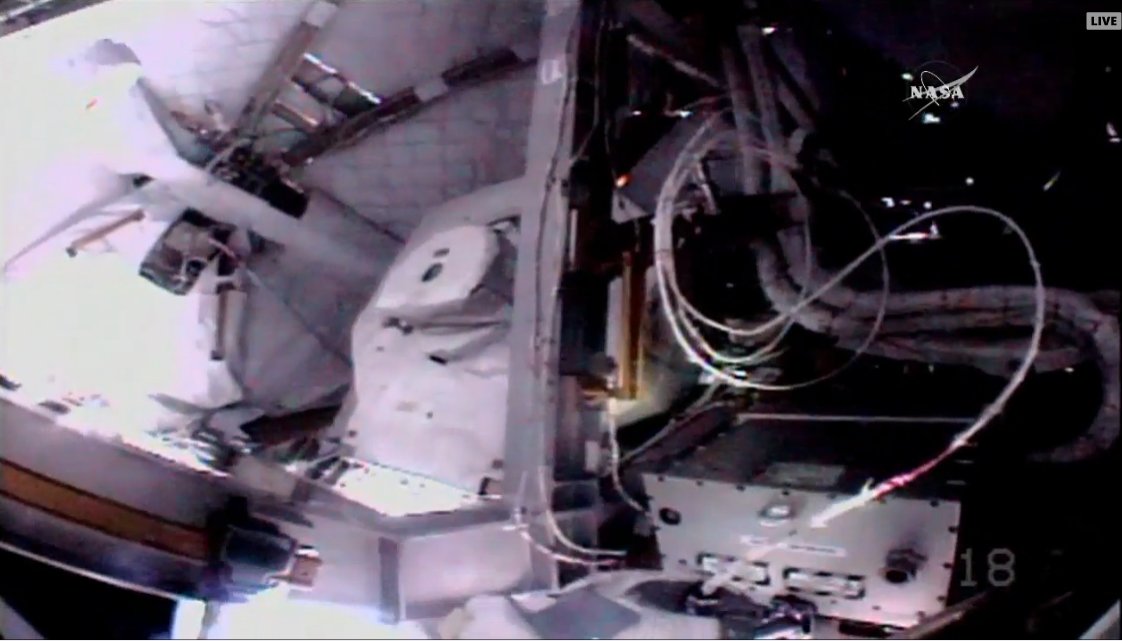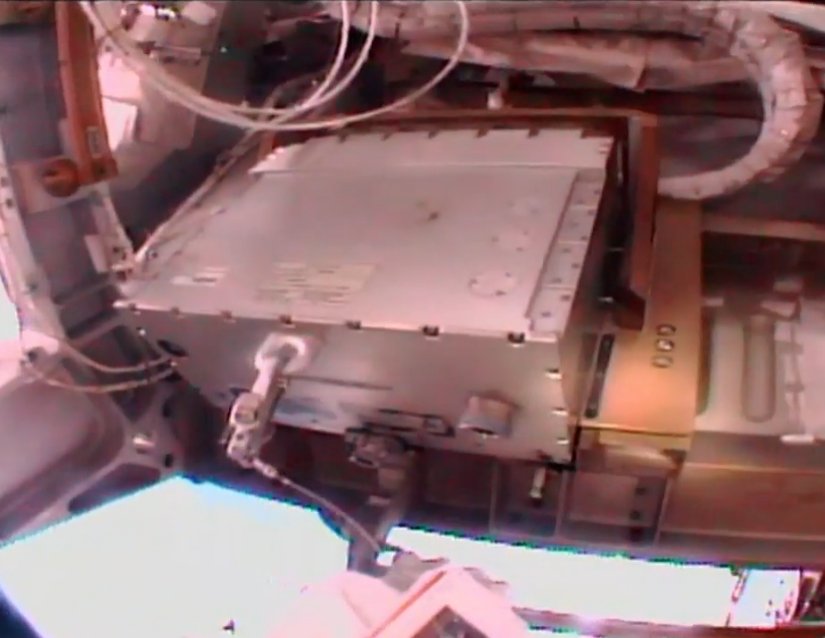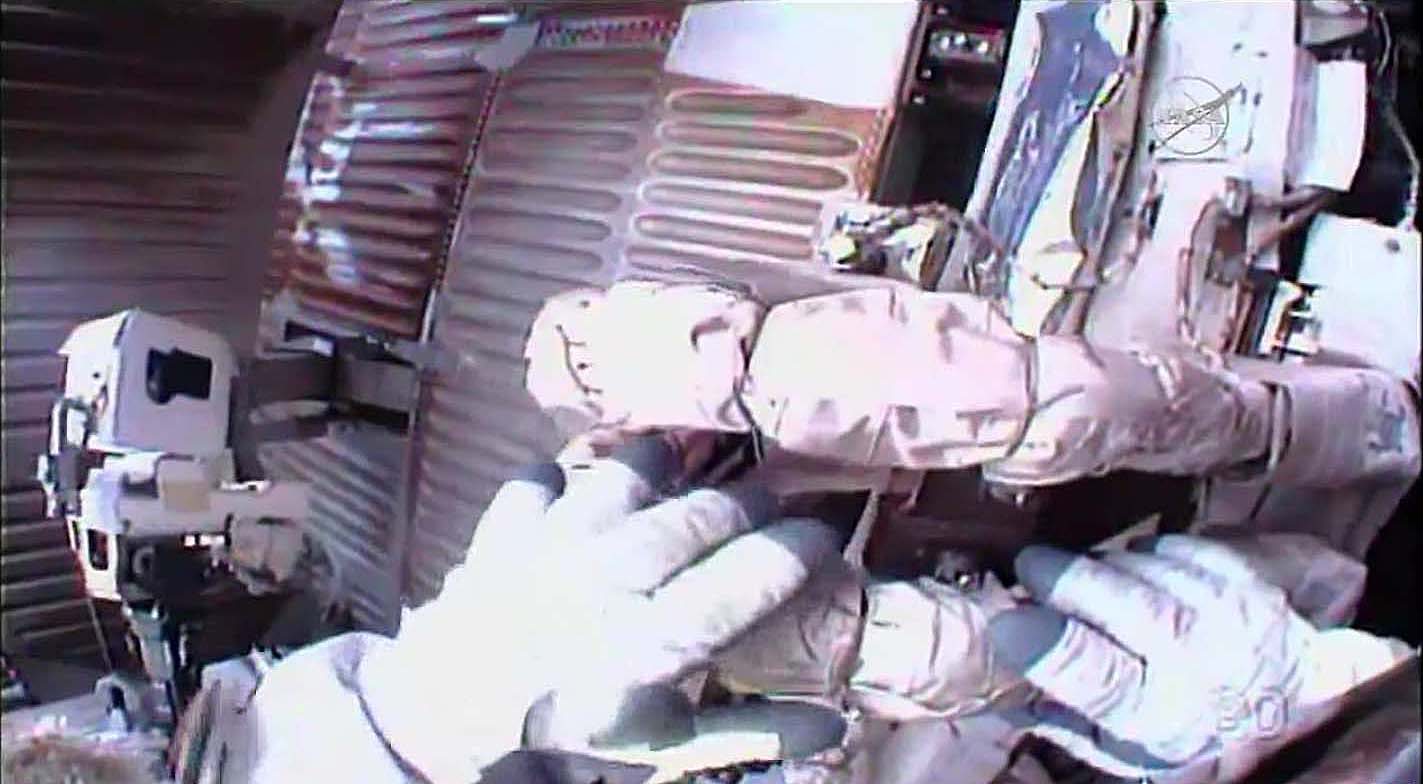Spacewalk Photos: Astronauts Prep Space Station for Future Commercial Spacecraft
EVA-40
Astronauts Thomas Pesquet of the European Space Agency (left) and Shane Kimbrough of NASA embarked on a spacewalk on March 24, 2017 to prepare the orbiting lab for the future docking of commercial spacecraft and do some other routine maintenance. During the spacewalk, titled U.S. EVA-40, Kimbrough (EV-1) wore the suit with red stripes, and Pesquet (EV-2) wore the plain white suit.
Pre-Spacewalk Selfie
Pesquet takes a selfie with Kimbrough in the Cupola at the International Space Station on March 19. The SpaceX Dragon cargo ship can be seen through the window.
Kimbrough's Space Selfie
ISS Commander Shane Kimbrough snaps a a selfie during his fifth spacewalk on March 24, 2017.
Pre-Spacewalk Portrait
Pesquet is pictured getting ready to head outside for his second spacewalk.
Pesquet's 2nd Spacewalk
Pesquet floats outside the International Space Station during his second spacewalk on March 24, 2017.
In the Airlock
NASA astronaut Peggy Whitson saves some photos of the spacewalkers before setting them out the door.
Replacing MDM
Kimbrough kicked off his spacewalk by heading to the Starboard-0 (S0) truss to replace an old, external backup computer called Multiplexer-Demultiplexer (MDM).
Breaking space news, the latest updates on rocket launches, skywatching events and more!
EPIC MDM
The new computer unit, called the Enhanced Processor and Integrated Communications (EPIC MDM), has upgraded software for the new docking adapter.
Kimbrough Climbs Outside the ISS
After completing the computer upgrade, Kimbrough made his way to the Tranquility module to disconnect the Pressurized Mating Adapter-3 (PMA-3). A few days later, NASA's ground crews used the station's robotic arm to relocate the PMA-3 to the Harmony module, where it will be used to dock commercial spacecraft at the space station by 2018.
Pesquet Outside the ISS
Pesquet started off his spacewalk by fetching a foot restraint before heading over to the P1 truss to investigate a suspected ammonia leak from a radiator valve in the station's cooling system.
Looking for Leaks
Pesquet jostled a set of hoses in the station's radiator heat belt monitor, the suspected source of the leak, in an effort to rattle loose any possible flakes of frozen ammonia. After looking for the leak for about 2 hours, he found no signs ammonia outside the space station.

Hanneke Weitering is a multimedia journalist in the Pacific Northwest reporting on the future of aviation at FutureFlight.aero and Aviation International News and was previously the Editor for Spaceflight and Astronomy news here at Space.com. As an editor with over 10 years of experience in science journalism she has previously written for Scholastic Classroom Magazines, MedPage Today and The Joint Institute for Computational Sciences at Oak Ridge National Laboratory. After studying physics at the University of Tennessee in her hometown of Knoxville, she earned her graduate degree in Science, Health and Environmental Reporting (SHERP) from New York University. Hanneke joined the Space.com team in 2016 as a staff writer and producer, covering topics including spaceflight and astronomy. She currently lives in Seattle, home of the Space Needle, with her cat and two snakes. In her spare time, Hanneke enjoys exploring the Rocky Mountains, basking in nature and looking for dark skies to gaze at the cosmos.
